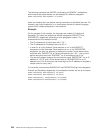
Table 19. Full-Screen Workstation Mappings (continued)
Supported
Workstation and
(Model)
1
Equivalent Type and
(Model) Internet Specification Description
VT100 (*ASCII)
6
DEC-VT100 VT100
7
VT102 DEC-VT102
DEC-VT200
DEC-VT220 VT200
7
VT220
7
24 x 80 monochrome ASCII display
Notes:
1. All 5250 workstations, except 5555 (B01) and 5555 (C01), can operate as 5251-11 workstations.
2. This workstation can be configured to be either 24 x 80 or 27 x 132. You must determine the mode of the
workstation before setting the workstation type parameter value.
3. The AS/400 system supports only 24 X 80 screens in remote 327x workstations. Remote 3277 (both distributed
host command facility (DHCF), and regular) workstations are mapped to IBM-3277-2. Remote 3278 workstations
are mapped to IBM-3278-2. Remote 3279 workstations are mapped to IBM-3279-2.
4. Some TELNET 3270 full-screen (TN3270) or 3278-2 emulator packages do not support write structured fields
correctly. Because of this, 3278-2 type devices are mapped to 3277-2 devices by the AS/400 TELNET server
implementation to allow the AS/400 system to work with those TN3270 implementations.
5. The extended attributes highlighting is supported. Underline, blink, and reverse video are included. 3270 DBCS
processing is also supported.
6. The VT100 virtual device supports VT220 devices.
7. VT100, VT200, and VT220 are not official terminal type names. However, some implementations negotiate using
these names as the terminal type value.
System API Enhancement
The System API QDCRDEVD (Retrieve Device Description) provides the IP address
of the Telnet client. There are new fields for display (*DSP) and print (*PRT)
devices:
1. Network protocol
2. Network protocol address
3. IP internet address in dotted decimal form
These fields supply sockets level information to your application about the client’s
TCP/IP connection.
Dynamic Application Printing with TCP/IP
AS/400 TCP/IP supplies essential application print support to help control and direct
printing over your TCP/IP networks. This includes dynamic print support for clients
with variable Internet Protocol (IP) addresses. This support is supplied in the form
of a system API enhancement that allows your applications to retrieve the IP
address of your Telnet client.
The determination of a client’s location through its IP address is an improvement
over SNA- based pass-through connections which relied on the virtual device name.
The AS/400 Telnet server stores the IP address of the client in the virtual device
description.
Chapter 6. Telnet Server 231


















